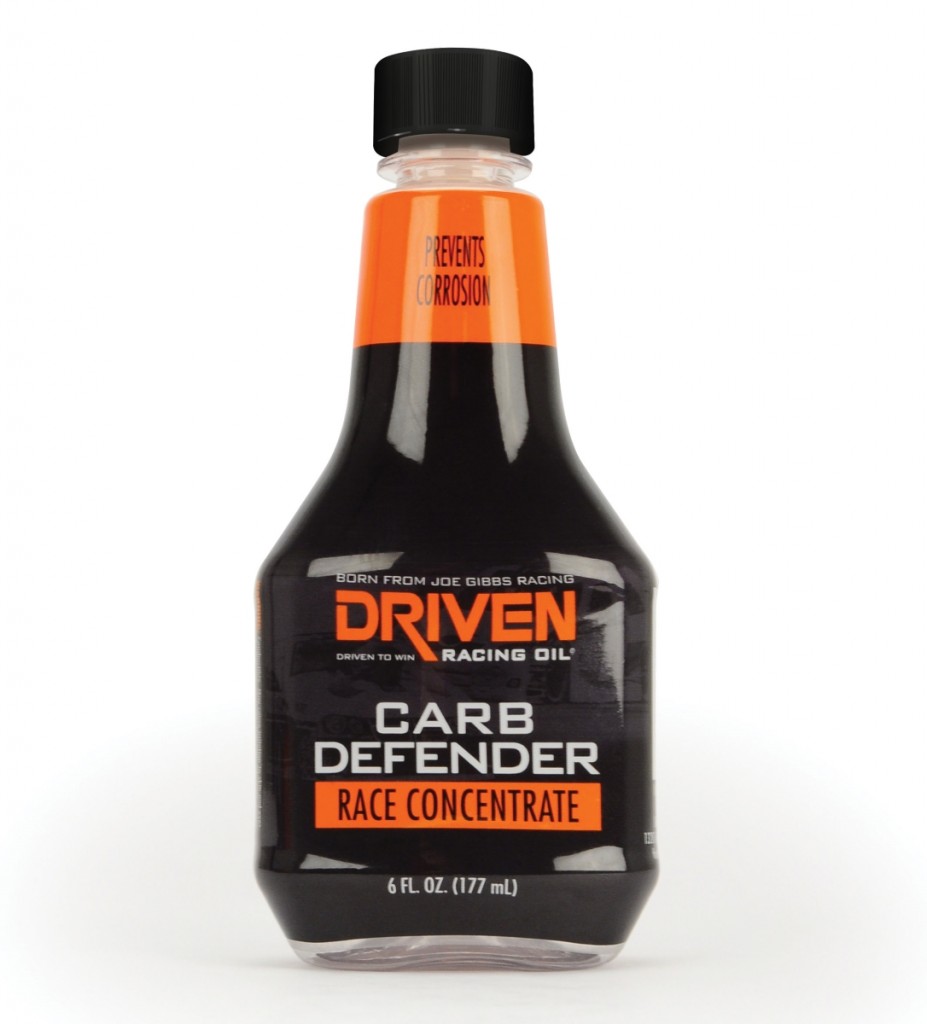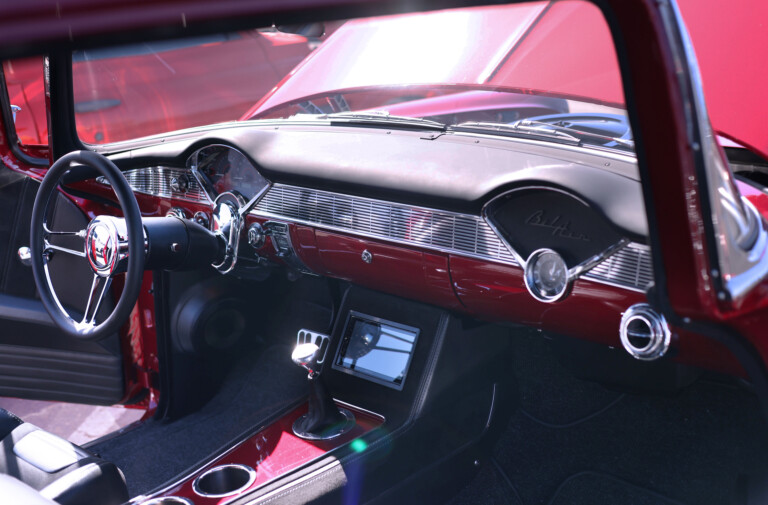Some Factors to Think About When Converting to Ethanol Blended Fuel
Words And Photos: Jeff Smith
Imagine if a friend let you in on a secret of how you could buy a 100-105 octane fuel directly from the local gas station that would be less than the cost of 87 octane gasoline – literally a vunderfuel for super- and turbocharged engines. The only down side is that fuel mileage will suffer about 20 to 30 percent. Would you do it? If you are a gearhead worthy of your collection of 9/16th’s wrenches, then the answer is an unqualified – Yes! If you’ve got a power-adder motor or even a high compression, normally aspirated engine – E85 seems like the perfect fuel.
But like all things that seem too good to be true, there are a few concerns with E85. While most stories are about tuning, which is also different, this story is about how to use the fuel and store it properly. The cliché may be that the devil is in the details, so before you chase down this alternative (dare we use the greenie term – “renewable?”) fuel path, it’s best to know where all the little ethanol land mines are buried! This way, E85 newcomers can benefit from the pioneering efforts of those E85 veterans.
Let’s begin by going over what exactly is E85 and why it appears to be the high-octane fuel of the future. Some call it corn squeezins or moonshine but technically it’s just plain old ethanol – also known as E98 (the other 2% is water). As a high-octane fuel, it’s wonderful stuff. Mixed in proportions of 15% 87-octane gasoline and 85% ethanol, E85 has an octane rating of roughly 105 octane. Right away that conjures up thoughts of – “Wow, that’s some great stuff.” And it is. But better yet, the nationwide average cost in late 2015 is $2.06 per gallon. So with increasing-availability as a race fuel for a touch over $2.00 a gallon, why isn’t every gearhead in the world using it? Good question.
There are many corrosion and long-term usage questions involved with using E85 that have appeared in technical forums and gearhead gossip sites on the internet that have done nothing but condemn this fuel as nasty and highly corrosive. That is somewhat true of methanol because it is considered a mild acid and is especially harmful to unprotected aluminum. But ethanol is far less corrosive. Alcohol is, however, a very good solvent and as such tends to have lower lubricating properties compared to gasoline. Adding the 15% gasoline helps with this, but alcohol will tend to clean away sludge or buildup collected from straight gasoline in an older fuel system. This means that filters should be checked far more regularly than with gasoline. Stainless steel filters are the only ones that should be used with E85, we’ll get into this later in the story.
From the daily users that we’ve spoken to, the issue mainly points to problems that surface when the fuel is stored for long periods of time. As mentioned earlier, ethanol itself is not corrosive, but contributes to corrosion when mixed with water. A major contributing factor is that ethanol is hygroscopic – meaning that ethanol tends to attract water. The worst-case scenario is E85 stored in a vented, half-full, steel fuel tank in a high humidity area for perhaps six to nine months where the weather experiences repeated large swings in temperature. During this time, the fuel attracts moisture out of the atmosphere and moisture also collects on the inside of the fuel tank from condensation.
At first, the alcohol will absorb and mix with the water. As the water content increases, this eventually creates what is called phase separation where the water separates from the alcohol. Since water is denser than ethanol or gasoline (water is 1 gram per cc, 0.79 gm/cc for ethanol and 0.75 gm/cc for gasoline), the water collects on the bottom of the fuel tank and begins to corrode the tank. This phase separation corrosion can also occur inside a carburetor float bowl or a fuel filter.

Driven Racing Oil has recently formulated a high-performance additive that does much more than just stabilize the fuel. Carb Defender and Injector Defender contain active ingredients that prevent corrosion from occurring as the result of long-term use of any ethanol fuel.
While corrosion is a potential problem, but there are solutions. Recently, Driven Racing Oil has come out with two products – Carb Defender and the new Injector Defender. These products are a combination of fuel stabilizer, deposit cleaner, and a corrosion protection additive that coats the inside of the fuel tank, lines, pump, carburetor, and/or injectors to protect these components from corrosion. The corrosion protection is self-sacrificing, so in order to maintain protection, Driven recommends using one 8-ounce bottle for every 25 gallons of fuel. For storage, the ideal situation would be to fill the tank with straight gasoline along with a bottle of Carb Defender.
This is a bit of a hassle considering that the engine has been tuned for E85 and would run excessively rich on gasoline unless a separate tune was created. A less bothersome recommendation would be to completely fill the tank with E85 combined with a bottle of Carb Defender. We’ve also spoken with users like Justin Nall, who has a turbocharged ’66 Chevelle that runs on E85. He’s from Minnesota and his storage technique involves draining the tank, filters, and lines and running straight gasoline through the fuel pump to ensure no water is present. He then seals the tank to prevent humidity from entering and so far has not had a problem.
Carburetors are a little different story. The zinc and magnesium alloys in most carburetors are especially reactive to the corrosive nature of the combination of water and ethanol if allowed to sit in a carburetor even for a short period of time. If you see white spots or flaking inside the carburetor float bowl for example, this is evidence of corrosion. That white stuff is aluminum oxide that is formed by the reaction of the zinc and magnesium in the carburetor corroding from exposure to a combination of water and ethanol. So E85 carbureted engines need substantially more help to combat this corrosion than an EFI style engine.
Carb Defender is designed to be used with E85 for every tankful. The anti-corrosion additive was developed by the largest additive company in the world that has years of experience creating additives for countries like Brazil that have been using ethanol fuel for decades. The additive in Carb Defender is self-sacrificing so it must be constantly replenished when using E85. If your carbureted street car runs on normal E10 (10 percent ethanol) fuel, you only need to add a bottle of the additive with every oil change. But with the greater percentage of ethanol in E85, the protection requirement is greater so a bottle of Cab Defender is the key for every tank of fuel.
Another important E85 issue relates to engine lubrication. Because a larger volume of ethanol is combusted compared to gasoline – especially in a supercharged or turbocharged application – it’s important that engine be operated long enough for the oil temperature to achieve a minimum of 190 to 200 degrees F. This is critical because it is inevitable that ethanol will sneak past the rings and end up in the oil. Ethanol boils at 177 degrees F, so in order to remove the ethanol from the oil, the sump temperature must exceed 190 to 200 degrees to ensure the ethanol evaporates out of the crankcase.
As stated earlier, ethanol is a very effective solvent and it tends to not only remove oil from the engine’s cylinder walls, but in concentrations greater than 5% in the oil, the ethanol has been proven to begin the process of destabilizing the protective coating of ZDDP high-pressure lubricants from metals surfaces like camshaft lobes and lifter interface, cylinder walls and piston rings, and engine bearings. Since ZDDP is self-sacrificing additive, minimizing or removing this lubricant could dramatically increase engine wear. On the plus side, the new wave of high-zinc engine oils for older performance engines offer additional protection in this area with their greater concentration of ZDDP additives.
A worst-case scenario would be a show car or limited-use E85-fueled street engine where it is started and run for short periods of time where the oil temperature does not achieve an operating temperature of 200 degrees F. After multiple engine run cycles under these conditions, it is likely that percentages of ethanol in the oil could exceed 5%, which could lead to accelerated engine wear and damaged parts. So if operating the engine with cold oil temperatures is unavoidable, consider changing the oil more often than you would with straight gasoline. Another item that would help would be a functional PCV valve system to draw off the ethanol vapors rather than rely on mere ventilation.
Hopefully this story has not dissuaded you from considering E85 as a great high performance street fuel. This fuel offers major power advantages at a low cost and yes, it comes at the price of additional maintenance especially when the engine or car will be dormant. That’s the reason that gasoline has been such a popular fuel for a century. But if you take a few minor precautions, E85 is an outstanding, high octane fuel for nearly all high performance applications.
| Description | PN | Source | Price |
| Driven Carb Defender, | 70040 | Summit Racing | $9.99 |
| Quick Fuel E85 Tester | 36-E85 | Summit Racing | $18.60 |
Sources
Aeromotive
aeromotiveinc.com
Aeroquip
aeroquipperformance.com
Driven Racing Oil
drivenracingoil.com
Fragola Performance Systems
fragolaperformancesystems.com
Quick Fuel Technology
quickfueltechnology.com
TechAFX
techafx.com




















